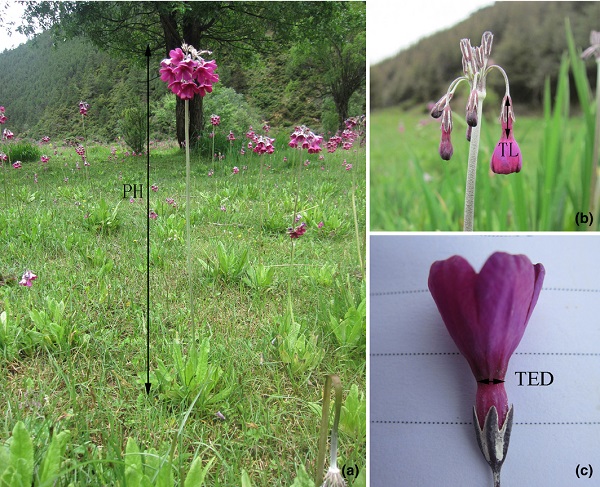Pollinator-mediated selection on floral signals (traits) can be extensive and strong. However, it is rare to experimentally quantify pollinator-mediated selection on floral traits together with supplemental hand pollination and pollinator observations.
Researchers from Xishuangbanna Tropical Botanical Garden (XTBG) experimentally quantified pollinator-mediated selection on flowering phenology, floral display, and pollination efficiency traits through female fitness and also pointed out the dominant pollinators at two Primula secundiflora populations.
The researchers quantified pollinator-mediated selection by subtracting estimates of selection gradients of plants receiving supplemental hand pollination from those of plants receiving open pollination.
Because P. secundiflora is a distylous, self- and intra-incompatible herb, reproductive success of this species is dependent on pollinators. Different pollinator assemblages are likely to result in variations in the pollinator-mediated selection on flowering phenology and floral traits.
They found that an earlier flowering start date was selected at the population where the dominant pollinators were syrphid flies, whereas at the population where the dominant pollinators were legitimate and illegitimate bumblebees, a later flowering start date was selected. Wider corolla tube entrance diameter was selected at both populations.
Furthermore, the strength of net directional selection on flowering start date and corolla tube entrance diameter was stronger at the population where the dominant pollinators were syrphid flies. Pollinator-mediated selection explained most of the between-population variations in the net directional selection on those two traits.
The results suggest the important influence of pollinator-mediated selection on floral evolution. Variations in pollinator assemblages not only result in variation in the direction of selection but also the strength of selection on floral traits.
The study entitled “Phenotypic selection on flowering phenology and pollination efficiency traits between Primula populations with different pollinator assemblages” has been published in Ecology and Evolution.

llustration of the phenotypic traits measured onPrimula secundiflora.
(a) PH, plant height; (b) TL, corolla tube length; (c) TED, corolla tube entrance diameter

